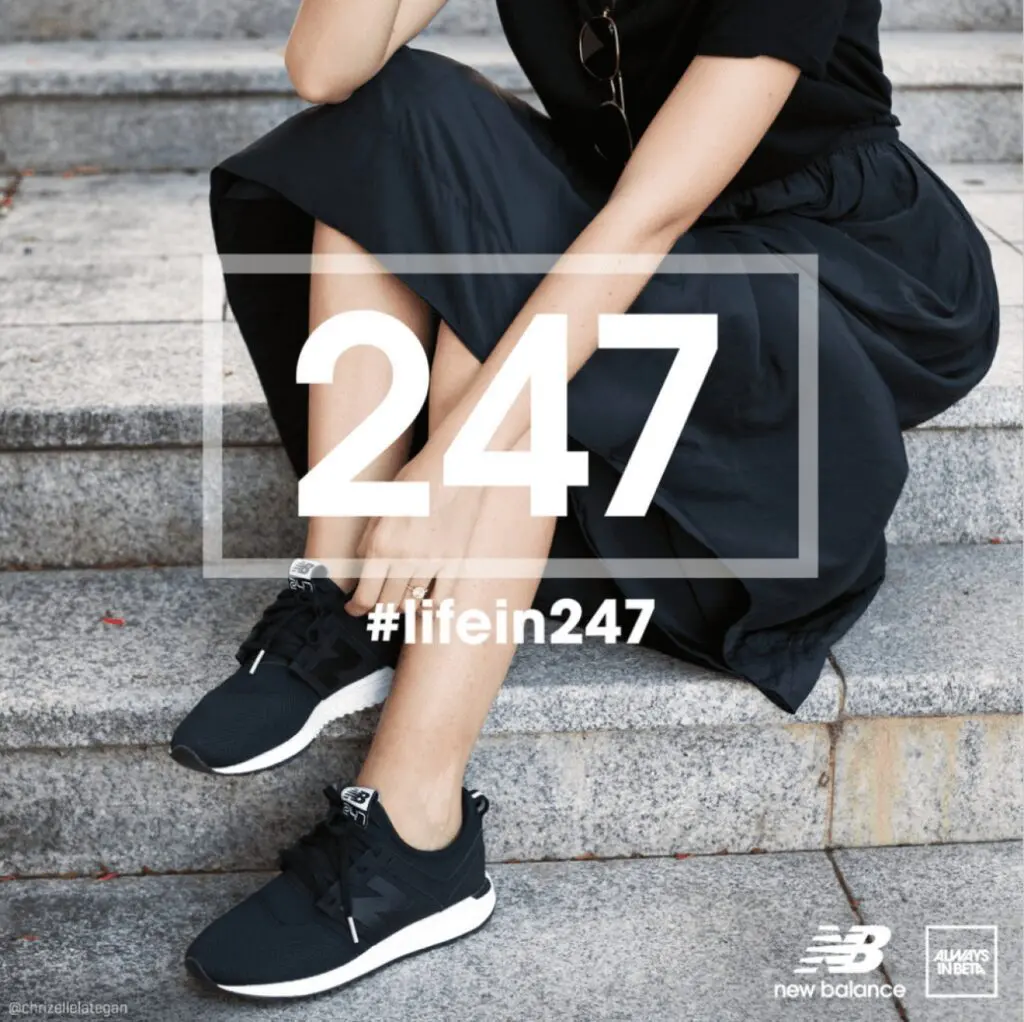

The last three months of the calendar year are when a user’s social feeds turn into the scrollable version of Times Square. Across the globe, brands in every sector will be battling it out to offer the best deals, promos, and sales that drive consumers to action.
Last year more than half of consumers turned to social media for holiday shopping inspiration. And it’s no surprise why brands are prioritising social as the channel to promote their offerings during this buzzing time of the year. With the competition across social commerce being as fierce as ever, brands need to strive to get ahead of the pack, get on the radar of their customers, and drive them to action.
A viral influencer campaign could be the saving grace of the holiday season. So what’s the secret to a guaranteed viral hit during the busiest advertising period of the year?
There’s no such thing as a silver bullet. But there are plenty of ways to boost your chances of virality this holiday season, and we’re sharing our top five with you today.
Tapping into relevant social trends through your holiday campaigns is a great way to engage your audience, increase your brand’s relevance within the space, and make your brand stand out from competitors. Injecting your brand into trending social conversations can boost your chances of a viral moment.
77% of TikTok users like it when brands use trends, memes, or challenges on TikTok, while 83% say that seeing trending content has inspired them to make a purchase.
Creators are at the forefront of viral trends – because they’re the ones usually creating them. They’re the perfect partners to help you successfully tap into the right ones. To ensure your campaign feels native to the platform, only jump on trends that are relevant to your brand and target audience.
It’s important to note that these trends form on social media extremely quickly, so the most successful brands have discretionary budgets for reactive opportunities. This is exactly how Australian food retailer Sanitarium achieved over 5.7 million video views with Vamp when they jumped on the opportunity presented by reactive creator marketing. Learn more about this case study.
Reactiveness isn’t always easy for brands who need time to source brand-safe creators and brief them in time before the trend loses momentum. This is where Vamp’s platform gives you a leg-up.
Within hours of drafting your campaign brief via Vamp’s briefing tool, you can have your campaign sent out to thousands of pre-vetted creators. Most of our campaign briefs receive 50% of the total creator applying within the first 2 hours. If that’s not reactive, we don’t know what is.

If you want to really get ahead of your competition this holiday season, creating your own trend or challenge is a way to own the path to social success.
When a brand sponsors or puts money behind a hashtag challenge on TikTok, it’s called a Branded Hashtag Challenge (BHC). Being one of TikTok’s many ad options, brands can leverage BHC’s as an effective holiday campaign guaranteed to reach the masses.
When a user clicks on a Branded Hashtag, they’re taken to a landing page on TikTok with the brand’s logo, link to their website, a description of the challenge, and all the videos using that hashtag.
Brands will typically come up with their own BHC and partner with creators to further spread awareness, engagement, and participation among users. This is where things can start to go viral; when everyday social users jump at the opportunity to join your challenge organically.
Having the ability to drive consumers to a landing page makes BHC’s a powerful conversion tool for brands. And although it’s sponsored, the nature of a challenge feels authentic to TikTok. A BHC can generate powerful results for your brand, including sparking mass user-generated content, mind-boggling engagement, and achieving higher ad recall, brand awareness, and ROAS. Learn more about the benefits of a Branded Hashtag Challenge.

It’s no surprise that video content, particularly short-form video content, is now favored by social platforms. Instagram and YouTube both now offer users their own short-form video features; Instagram Reels and YouTube Shorts, both having taken inspiration from TikTok, which was once again the most downloaded app in Q1 2022.
This push from social platforms for their users to create and consume more short-form video content means users crave those short bursts of entertainment.
So now more than ever it’s important for brands to keep video content front of mind when engaging with creators, especially over the holiday period. It could be a critical method to how you’ll capture and keep the attention of your customers.
Reels can help your brand increase your return on ad spend, achieve higher organic reach, and generate more engagement. Studies have shown that TikTok drives greater audience engagement compared to other social platforms.
Short-form video content is also the best way to give consumers a taste of your products, before they decide to buy it as a gift for a loved one or themselves this holiday season. Creators can produce content, such as hauls, product reviews, and tutorials, in a fun and engaging way that are more likely to go viral than static image posts or long-forms of video content.
Brand safety is top of mind for many marketers – and rightly so. So if it puts your mind at ease, ask to approve your creator’s content before it goes live. And to preserve the authenticity of your campaign, only reject content and provide constructive feedback if it doesn’t meet your brief.
However, we advise not to go overboard with the creative controls.
Creators are effective at what they do, because they understand their audience and know what is going to appeal to them. It’s best to hand creative control over to the pros and let them interpret your brief in their own, unique way.
Marketers need to acknowledge that while it may be your brand, it is their audience. No-one knows how to connect with them better than the creator themselves.
Loosening the reigns can be liberating. Creators can do unexpected things, and within reason, take creative risks on behalf of your brand. You could even end up with more innovative content ideas than you could have imagined in-house.
This strategy has allowed everyday utility brands such as Scotch Tape, create out-of-the-ordinary influencer content, such as the two images below.

Both of these Vamp creators took Scotch Tape’s recent Christmas campaign brief, and delivered content that stood out in users’ social feeds to drive momentum and engagement.
A paid media strategy can also help supercharge your holiday influencer campaign results and drive mass awareness, website traffic, engagements, and thus, create virality.
Social algorithm changes aside, turning your influencer-generated content into Instagram’s Branded Content Ads or TikTok’s Spark Ads is a sure-fire way to get them directly in front of your target audience during the busiest sales period of the year.
Boosted posts appear native – with the original content, caption, and influencer handle – but can be targeted with precision to reach specific audiences, age ranges, and locations.
It also helps to create a smooth path to purchase. Given 67% of consumers say they’ve increased their online shopping since the start of the pandemic, this is imperative now more than ever for brands to offer their customers.
The ‘Shop now’ button which can be added to boosted posts will take consumers straight to your ecommerce site. Turning social scrollers into shoppers in a matter of clicks.
For maximum results, Vamp suggests putting spend behind content that is already performing well organically. This tactic has driven up to 1,297% ROAS for Vamp clients during the holiday season.
Discover more about the benefits of boosting influencer content or use our guide to figure out which paid media option is best for your brand.


| Cookie | Duration | Description |
|---|---|---|
| __cf_bm | 30 minutes | This cookie, set by Cloudflare, is used to support Cloudflare Bot Management. |
| _abck | 1 year | This cookie is used to detect and defend when a client attempt to replay a cookie.This cookie manages the interaction with online bots and takes the appropriate actions. |
| _GRECAPTCHA | 5 months 27 days | This cookie is set by the Google recaptcha service to identify bots to protect the website against malicious spam attacks. |
| bm_sz | 4 hours | This cookie is set by the provider Akamai Bot Manager. This cookie is used to manage the interaction with the online bots. It also helps in fraud preventions |
| cookielawinfo-checkbox-advertisement | 1 year | Set by the GDPR Cookie Consent plugin, this cookie is used to record the user consent for the cookies in the "Advertisement" category . |
| cookielawinfo-checkbox-analytics | 11 months | This cookie is set by GDPR Cookie Consent plugin. The cookie is used to store the user consent for the cookies in the category "Analytics". |
| cookielawinfo-checkbox-functional | 11 months | The cookie is set by GDPR cookie consent to record the user consent for the cookies in the category "Functional". |
| cookielawinfo-checkbox-necessary | 11 months | This cookie is set by GDPR Cookie Consent plugin. The cookies is used to store the user consent for the cookies in the category "Necessary". |
| cookielawinfo-checkbox-others | 11 months | This cookie is set by GDPR Cookie Consent plugin. The cookie is used to store the user consent for the cookies in the category "Other. |
| cookielawinfo-checkbox-performance | 11 months | This cookie is set by GDPR Cookie Consent plugin. The cookie is used to store the user consent for the cookies in the category "Performance". |
| CookieLawInfoConsent | 1 year | Records the default button state of the corresponding category & the status of CCPA. It works only in coordination with the primary cookie. |
| csrftoken | past | This cookie is associated with Django web development platform for python. Used to help protect the website against Cross-Site Request Forgery attacks |
| elementor | never | This cookie is used by the website's WordPress theme. It allows the website owner to implement or change the website's content in real-time. |
| viewed_cookie_policy | 11 months | The cookie is set by the GDPR Cookie Consent plugin and is used to store whether or not user has consented to the use of cookies. It does not store any personal data. |
| Cookie | Duration | Description |
|---|---|---|
| __hssc | 30 minutes | HubSpot sets this cookie to keep track of sessions and to determine if HubSpot should increment the session number and timestamps in the __hstc cookie. |
| __hssrc | session | This cookie is set by Hubspot whenever it changes the session cookie. The __hssrc cookie set to 1 indicates that the user has restarted the browser, and if the cookie does not exist, it is assumed to be a new session. |
| __hstc | 5 months 27 days | This is the main cookie set by Hubspot, for tracking visitors. It contains the domain, initial timestamp (first visit), last timestamp (last visit), current timestamp (this visit), and session number (increments for each subsequent session). |
| _ga | 2 years | The _ga cookie, installed by Google Analytics, calculates visitor, session and campaign data and also keeps track of site usage for the site's analytics report. The cookie stores information anonymously and assigns a randomly generated number to recognize unique visitors. |
| _ga_56JWQ0019V | 2 years | This cookie is installed by Google Analytics. |
| _gat_UA-132076027-1 | 1 minute | A variation of the _gat cookie set by Google Analytics and Google Tag Manager to allow website owners to track visitor behaviour and measure site performance. The pattern element in the name contains the unique identity number of the account or website it relates to. |
| _gcl_au | 3 months | Provided by Google Tag Manager to experiment advertisement efficiency of websites using their services. |
| _gid | 1 day | Installed by Google Analytics, _gid cookie stores information on how visitors use a website, while also creating an analytics report of the website's performance. Some of the data that are collected include the number of visitors, their source, and the pages they visit anonymously. |
| bscookie | 1 year | LinkedIn sets this cookie to store performed actions on the website. |
| CONSENT | 2 years | YouTube sets this cookie via embedded youtube-videos and registers anonymous statistical data. |
| hubspotutk | 5 months 27 days | HubSpot sets this cookie to keep track of the visitors to the website. This cookie is passed to HubSpot on form submission and used when deduplicating contacts. |
| Cookie | Duration | Description |
|---|---|---|
| _fbp | 3 months | This cookie is set by Facebook to display advertisements when either on Facebook or on a digital platform powered by Facebook advertising, after visiting the website. |
| _pin_unauth | 1 year | This cookie is placed by Pinterest Tag when the user cannot be matched. It contains a unique UUID to group actions across pages. |
| AnalyticsSyncHistory | 1 month | No description |
| bcookie | 1 year | LinkedIn sets this cookie from LinkedIn share buttons and ad tags to recognize browser ID. |
| bscookie | 1 year | LinkedIn sets this cookie to store performed actions on the website. |
| fr | 3 months | Facebook sets this cookie to show relevant advertisements to users by tracking user behaviour across the web, on sites that have Facebook pixel or Facebook social plugin. |
| IDE | 1 year 24 days | Google DoubleClick IDE cookies are used to store information about how the user uses the website to present them with relevant ads and according to the user profile. |
| lang | session | LinkedIn sets this cookie to remember a user's language setting. |
| lidc | 1 day | LinkedIn sets the lidc cookie to facilitate data center selection. |
| MONITOR_WEB_ID | 3 months | The cookie is used by: TikTok The functionality is: to store if the user has seen embedded content. The purpose is: Marketing/Tracking |
| test_cookie | 15 minutes | The test_cookie is set by doubleclick.net and is used to determine if the user's browser supports cookies. |
| ttwid | 1 year | No description available. |
| UserMatchHistory | 1 month | LinkedIn sets this cookie for LinkedIn Ads ID syncing. |
| VISITOR_INFO1_LIVE | 5 months 27 days | A cookie set by YouTube to measure bandwidth that determines whether the user gets the new or old player interface. |
| YSC | session | YSC cookie is set by Youtube and is used to track the views of embedded videos on Youtube pages. |
| yt-remote-connected-devices | never | YouTube sets this cookie to store the video preferences of the user using embedded YouTube video. |
| yt-remote-device-id | never | YouTube sets this cookie to store the video preferences of the user using embedded YouTube video. |
| yt.innertube::nextId | never | This cookie, set by YouTube, registers a unique ID to store data on what videos from YouTube the user has seen. |
| yt.innertube::requests | never | This cookie, set by YouTube, registers a unique ID to store data on what videos from YouTube the user has seen. |
| Cookie | Duration | Description |
|---|---|---|
| li_gc | 5 months 27 days | No description |
| ln_or | 1 day | No description |
| msToken | 10 days | No description |
| wp-wpml_current_language | session | No description available. |